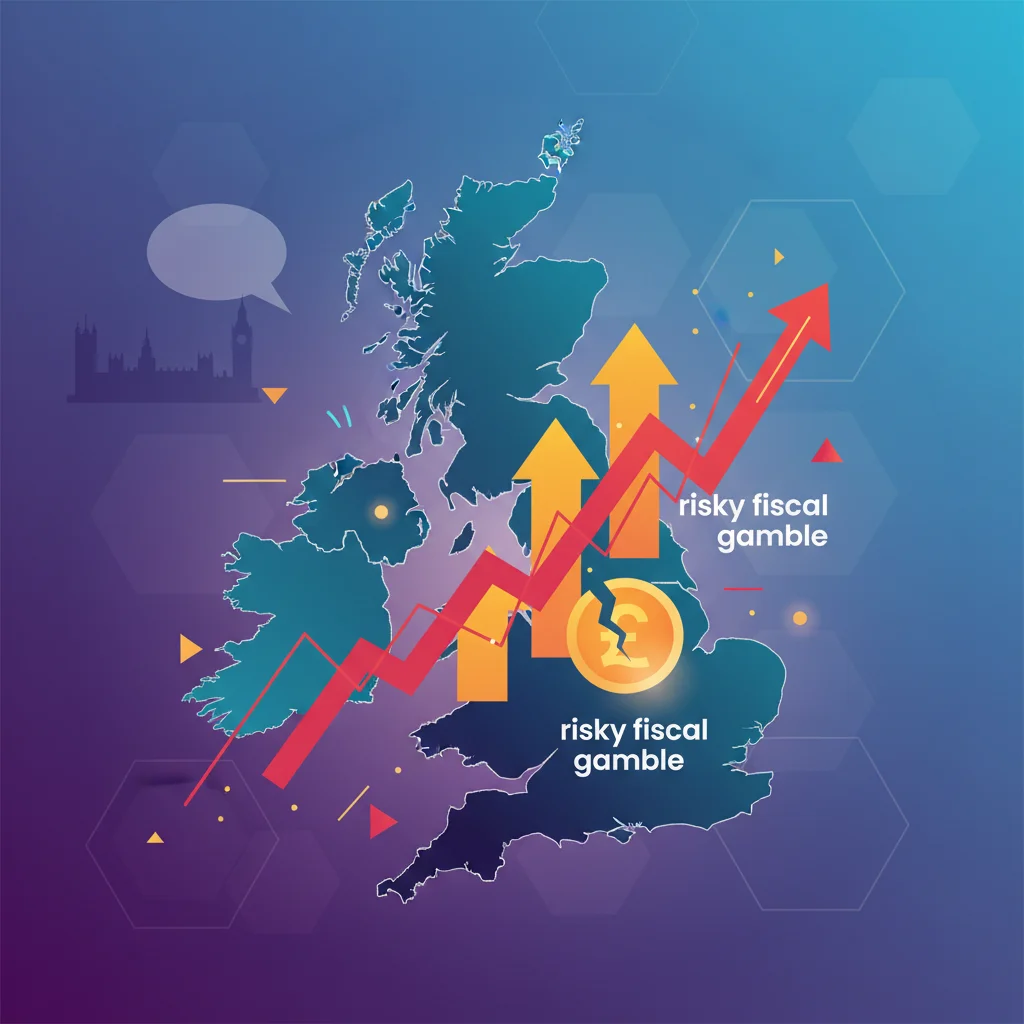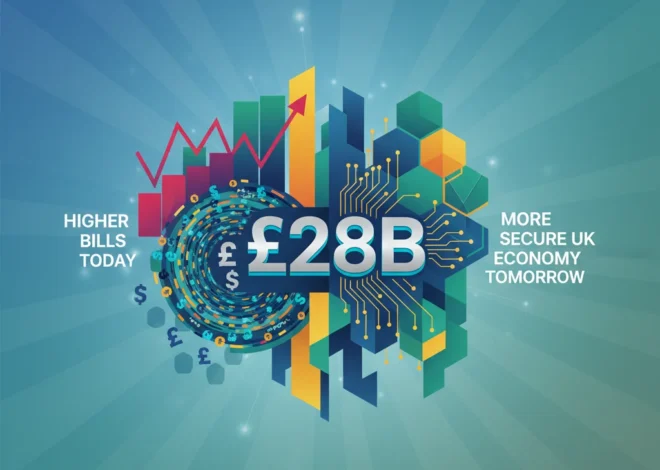
UK Hints at Energy VAT Cut: A Lifeline for the Economy or a Risky Fiscal Gamble?
The Whisper on Westminster: Unpacking the Potential Cut to Energy Bill VAT
In the corridors of power, a single phrase can send ripples through the entire economy. Recently, that phrase came from Energy Secretary Ed Miliband, who highlighted the government’s need to address the severe “cost-of-living crisis” facing the UK. While not an explicit policy announcement, his comments have ignited speculation around one of the most direct tools in the fiscal arsenal: a potential cut to the Value Added Tax (VAT) on domestic energy bills. This isn’t just a minor tweak to household expenses; it’s a significant potential policy shift with profound implications for personal finance, national economics, and the stock market.
For millions of households and businesses, energy costs have transformed from a predictable utility bill into a source of significant financial anxiety. A VAT cut could offer immediate relief, but it also opens a Pandora’s box of economic questions. Is this a sustainable solution or a short-term fix for a long-term problem? What would such a move signal to investors? And how would it impact the government’s own precarious balancing act of borrowing, spending, and taxation? This article delves deep into the multifaceted consequences of this potential policy, analyzing its impact on consumers, businesses, investors, and the broader UK economy.
A Nation Under Pressure: The Anatomy of the UK’s Cost-of-Living Crisis
To understand the gravity of a potential VAT cut, one must first grasp the economic environment in which it’s being considered. The UK is navigating a period of intense financial strain, driven by a confluence of global and domestic factors. Inflation, while having receded from its peak, remains a persistent concern, eroding purchasing power and squeezing household budgets. According to the Office for National Statistics (ONS), while the headline CPI rate has fallen, core costs for essentials like food and energy continue to place a heavy burden on the public.
Energy prices have been a primary protagonist in this economic drama. Following global supply shocks, the energy price cap set by the regulator, Ofgem, saw unprecedented increases, directly translating to higher bills for consumers. While prices have stabilized, they remain significantly elevated compared to historical norms. This has a cascading effect throughout the economy: consumers cut back on discretionary spending, businesses face higher operational costs, and the risk of loan defaults puts pressure on the banking sector. It is this backdrop of widespread financial distress that makes the idea of a tax cut on a basic necessity so politically potent.
The Great Unraveling: Why Today's Economy Defies Every Rule in the Book
Demystifying the VAT on Energy: What a Cut Really Means
Value Added Tax, or VAT, is a consumption tax placed on most goods and services. For domestic energy (electricity and gas), the UK applies a reduced rate of 5%. This has been the standard for decades, but the current crisis has brought it under intense scrutiny. A proposal to cut or eliminate this tax is, in essence, a proposal for a direct, albeit modest, price reduction for every energy consumer.
To illustrate the tangible impact, let’s consider the average household’s energy bill. Below is a simplified breakdown of potential savings based on Ofgem’s price cap figures.
| Metric | Current Scenario (5% VAT) | Proposed Scenario (0% VAT) | Potential Annual Savings |
|---|---|---|---|
| Typical Annual Bill (as of Q2 2024) | ~£1,690 | ~£1,609.50 | ~£80.50 |
| VAT Component | ~£80.50 | £0 | 100% of the VAT |
| Effective Price Reduction | N/A | 5% | Directly proportional to energy usage |
Note: Figures are illustrative and based on Ofgem’s price cap for a typical dual fuel household paying by direct debit. Actual savings will vary based on individual consumption.
While an annual saving of around £80 might not seem transformative, for families on the brink, it can mean the difference between heating their home adequately or making painful cutbacks elsewhere. For businesses, especially small and medium-sized enterprises (SMEs) where energy is a significant overhead, the cumulative savings could be substantial, potentially staving off price hikes or even insolvency.
The Economic Ripple Effect: A Double-Edged Sword
A change in tax policy is never a simple action; it’s like dropping a stone into a pond, creating ripples that spread far and wide. A VAT cut on energy is no exception, presenting both opportunities and risks for the UK economy.
Positive Impacts:
- Increased Disposable Income: The most immediate effect is more money in consumers’ pockets. This can boost consumer confidence and lead to increased spending in other sectors, particularly retail and hospitality, providing a micro-stimulus.
- Lower Business Overheads: For businesses, lower energy costs mean improved margins. This could lead to price freezes (or smaller increases), greater investment in growth, or increased hiring.
- Disinflationary Pressure: By directly cutting the price of a key component of the inflation basket, the policy would have an immediate, albeit small, downward effect on the headline CPI rate. The Bank of England would certainly take note of this when considering future interest rate decisions.
Potential Drawbacks and Risks:
- Fiscal Hole: The most significant risk is the loss of tax revenue. HM Treasury would need to find this money elsewhere, either by increasing other taxes, cutting public services, or increasing government borrowing. According to a House of Commons Library briefing, removing VAT on domestic fuel could cost the Exchequer around £2.4 billion per year.
- Increased National Debt: If the cut is funded by borrowing, it adds to the national debt, potentially leading to higher interest payments and concerns among bond investors (those involved in gilt trading).
- Blunt Instrument: A universal cut doesn’t differentiate based on need. Wealthier households receive the same percentage benefit as those in fuel poverty. A more targeted approach, while administratively complex, could be more efficient. The rise of modern financial technology (fintech) platforms could potentially help in delivering such targeted support more effectively than in the past.
Investor Playbook: Navigating the Market Reaction
For those engaged in investing and watching the stock market, a potential VAT cut is a key data point that could shift sector-specific outlooks.
- Energy Utilities: This is a complex one. On one hand, the headline price they receive per unit of energy would fall. On the other, lower bills could drastically reduce the rate of customer defaults and bad debt, which has been a major concern for the sector. The net effect on profitability would need careful analysis.
- Consumer Discretionary Stocks: Companies in retail, travel, and leisure could see a significant benefit. If consumers feel even slightly better off, this is where the extra disposable income is likely to flow, potentially boosting share prices.
- UK Gilts and the Pound (GBP): The reaction here depends entirely on how the tax cut is funded. If it’s seen as a fiscally responsible measure within a credible long-term plan, the impact could be neutral. However, if it’s perceived as an unfunded giveaway that increases borrowing, it could weaken the pound and cause gilt yields to rise (prices to fall) as investors demand a higher return for the increased risk. This is a critical consideration for anyone involved in currency or bond trading.
Beyond the Quick Fix: Exploring Sustainable Long-Term Solutions
While a VAT cut offers immediate relief, it does little to address the root causes of high energy costs: volatile global markets and insufficient domestic energy infrastructure. A truly robust strategy would look beyond short-term tax adjustments.
Experts argue for a multi-pronged approach that includes massive investment in renewable energy sources to insulate the UK from global gas price shocks. Furthermore, a national home insulation program could permanently reduce energy demand, offering a more lasting solution to high bills. There is also a growing conversation around the role of advanced financial technology and smart grids in optimizing energy consumption. Some futurists even point to the potential of blockchain technology to create decentralized, transparent energy markets where consumers can trade surplus energy directly, though this remains a long-term vision.
Ultimately, the debate is between a short-term palliative and a long-term cure. The government’s choice will reveal much about its priorities and its vision for the future of the UK economy and its energy security.
Beyond the Headlines: Decoding the Economic Stakes of the Gaza Peace Summit
Conclusion: A Critical Juncture for UK Economic Policy
The hint of a VAT cut on energy bills is more than just a headline; it’s a reflection of the immense pressure on the UK’s policymakers to act decisively on the cost-of-living crisis. As we have seen, the proposal is a complex trade-off. It offers tangible, immediate relief to millions but comes with significant fiscal costs and does not address the fundamental drivers of high energy prices. For investors, business leaders, and financial professionals, this is a moment to watch closely. The government’s next move will be a powerful signal about its approach to fiscal discipline, its strategy for economic growth, and its commitment to long-term energy security. Whether it proves to be a masterstroke of economic relief or a short-sighted gamble, the consequences will be felt across every corner of the UK economy for years to come.


